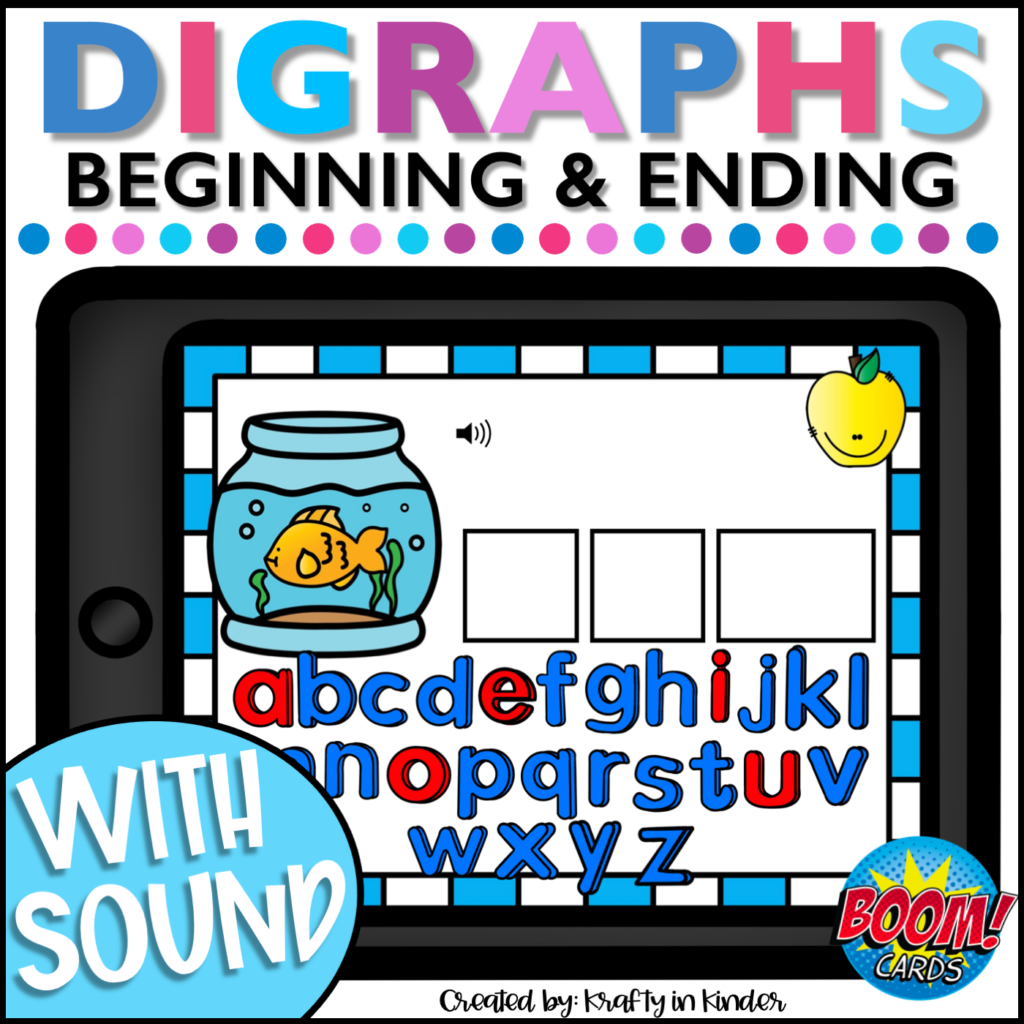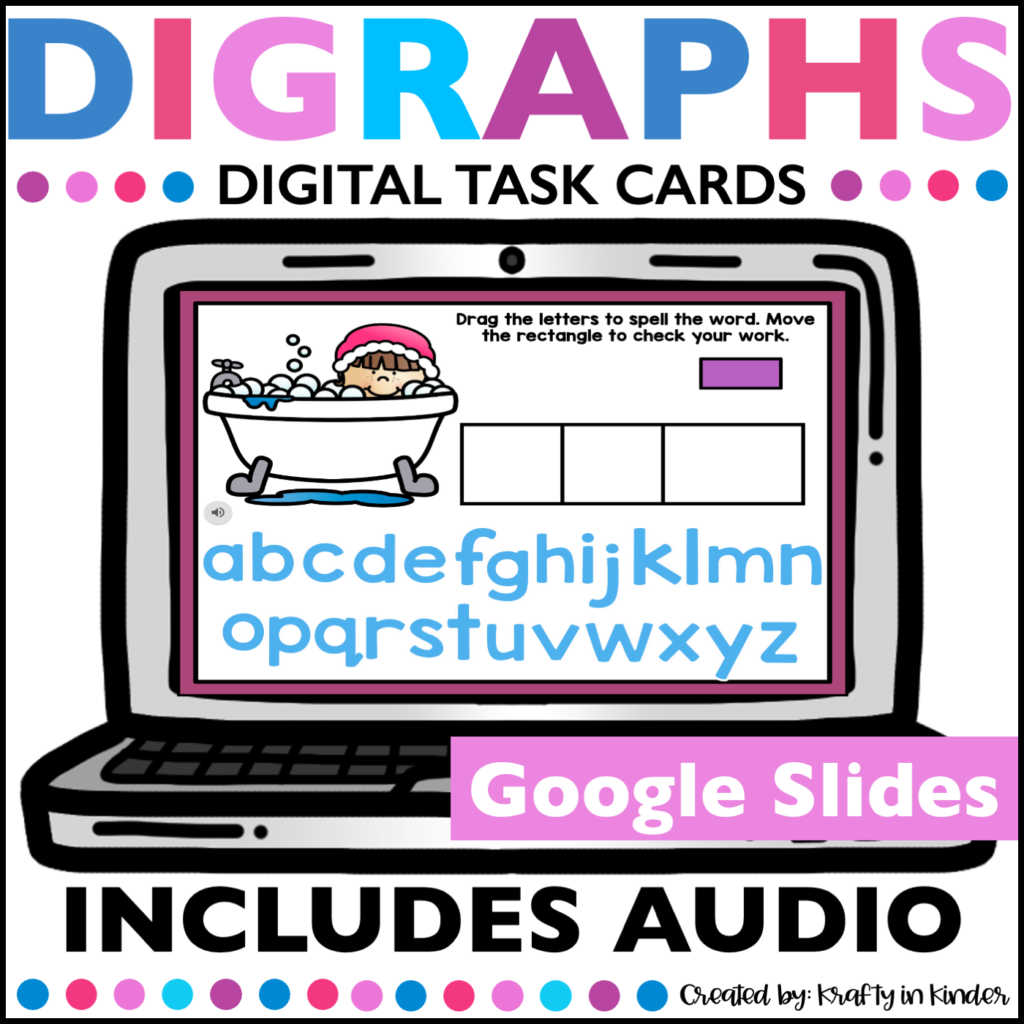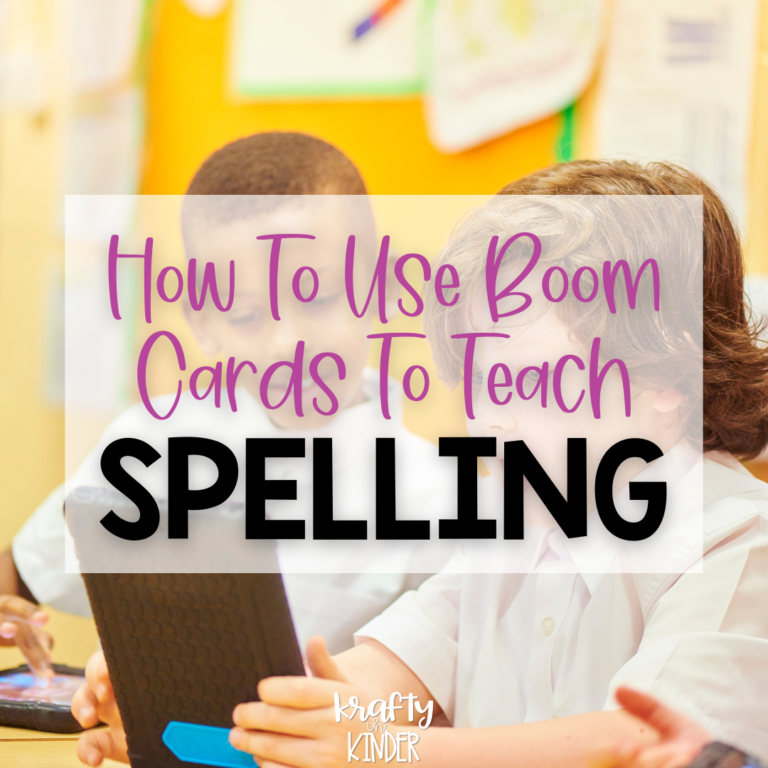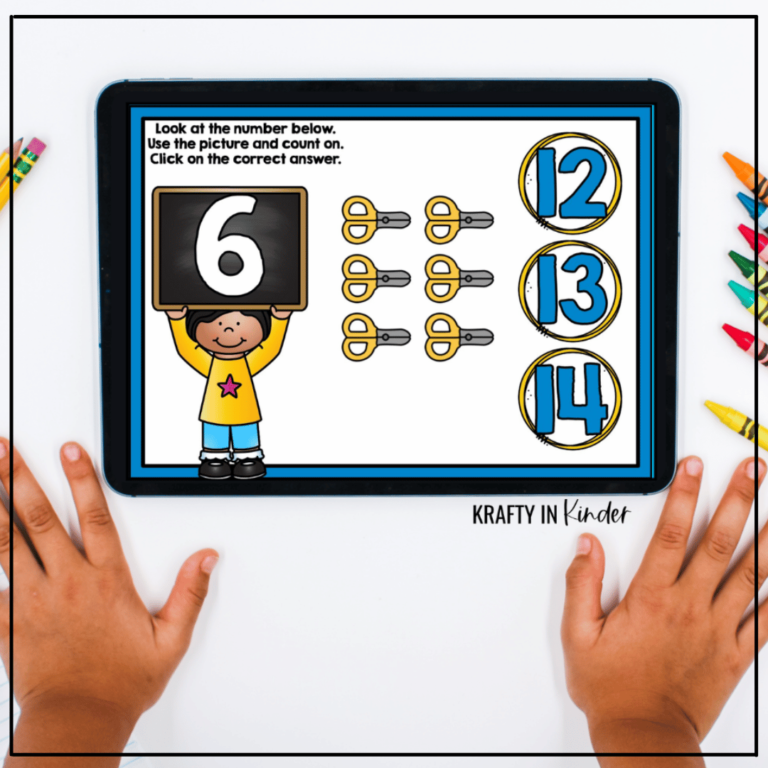Boom Cards vs. Google Slides?
We are about to start a school year unlike any other. Some teachers will be returning to the classroom with all of their students, some will have students physically in the room while other students are taught virtually, some teachers will juggle a hybrid model and others will be knee deep in complete distance learning. No matter which way you are starting, you should be thinking digital. And if you’re thinking digital, you may also be thinking should I use Boom Cards or Google Slides?!
One thing the 2019-2020 school year taught is that teachers are AMAZING. We learned how to teach our students from a distance overnight as we quickly scrambled to figure out different digital platforms and resources. One big question that was circulating throughout the distance learning experience (and still is) was: Boom Cards or Google Slides? Should I use Boom Cards? Should I use Google Slides? Should I use both? Let’s explore and compare both platforms.
Let’s Get DIGITAL
Full transparency: I have been using Boom Cards in my classroom waaaay before the school closures occurred. I had already been using and creating them so it’s a platform that I am very comfortable with. That made my transition to using them during distance learning fairly seamless. But with Google Classroom being the main platform used to communicate and send assignments to students, I felt compelled to at least investigate what Google Slides has to offer.
Let’s Break it Down
You can find digital resources in many formats. Boom Cards and Google Slides have been the most popular format used among lower elementary aged students. Before I tell you my thoughts, let’s learn a little about each format.
What are Boom Cards?
Boom Cards are interactive, self-checking, digital task cards. They are a “gamified” learning activity that is played on the Boom Learning website (www.boomlearning.com) or on their free APP. You can play Boom Cards on almost any device, as long as you have internet connection. Boom Cards were created to be played as a digital task card. If I’ve sparked your interest and you want to learn even more about Boom Cards, click here to read the most frequently asked questions about Boom.
What are Google Slides?
Google Slides is Google’s version of PowerPoint. Because of distance learning, many teachers created and sought out activities that could easily be assigned to students using Google Classroom. Students can access and complete the activities in the “edit” mode of Google Slides. I suggest students use a laptop or desktop (not tablet) when completing Google Slides activities due to the fact that it will be easier to complete the assignment on a larger screen.
Both formats have their pros and cons and to help you understand better, I created these simple visuals.


As you can see, both formats have strong pros yet an equal amount of cons. I think it is important to consider the user friendliness of each platform and your students level of comfort with technology. Also, take into consideration the type of technology your students will be using (iPads vs. Chromebooks). Lastly, think about what you are using them for. Are you using them as an actual lesson? As a practice activity? Reinforcement of a skill? Review?
The chart below will show a side by side comparison between Boom Cards and Google Slides in regards to some of the most important features.
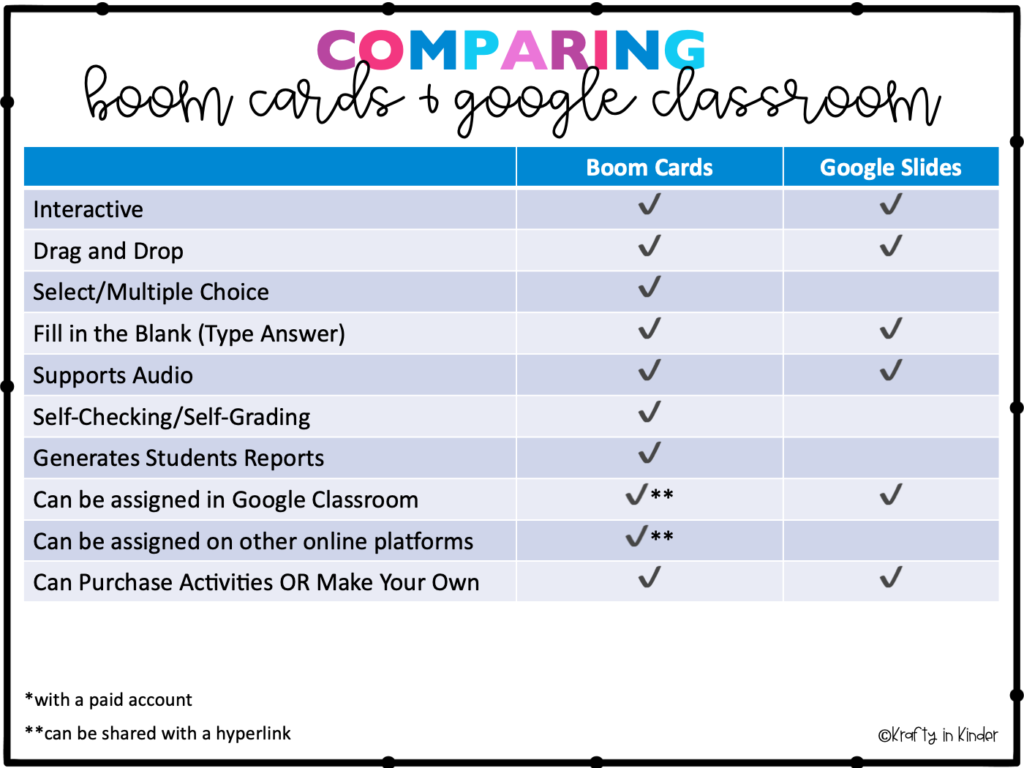
Bottom line, I think both platforms are equally useful and should be explored as we enter yet another highly digital teaching experience. But my heart lies with Boom Cards. I feel that the interface is extremely user friendly for the littlest learners (K and 1) and the reports that Boom Learning generates for the teacher (in the paid version) is worth every penny. Google Slides activities work great as lessons where you are teaching a concept and then having students practice a skill but I do not prefer them as digital task cards.
To help you see the formats in use, I have included TWO resources for you to grab for FREE. One is a deck of Boom Cards and the other is a Google Slides activity but they both focus on beginning and ending digraphs. You can try them both out for yourself! Just click on the images below and download the free Boom Cards and Google Slides.
I hope you found this information helpful in understanding the difference between Boom Cards and Google Slides! Do you prefer one platform over the other? Do you use both? I’d love to hear your thoughts– just click REPLY below and let me know!

